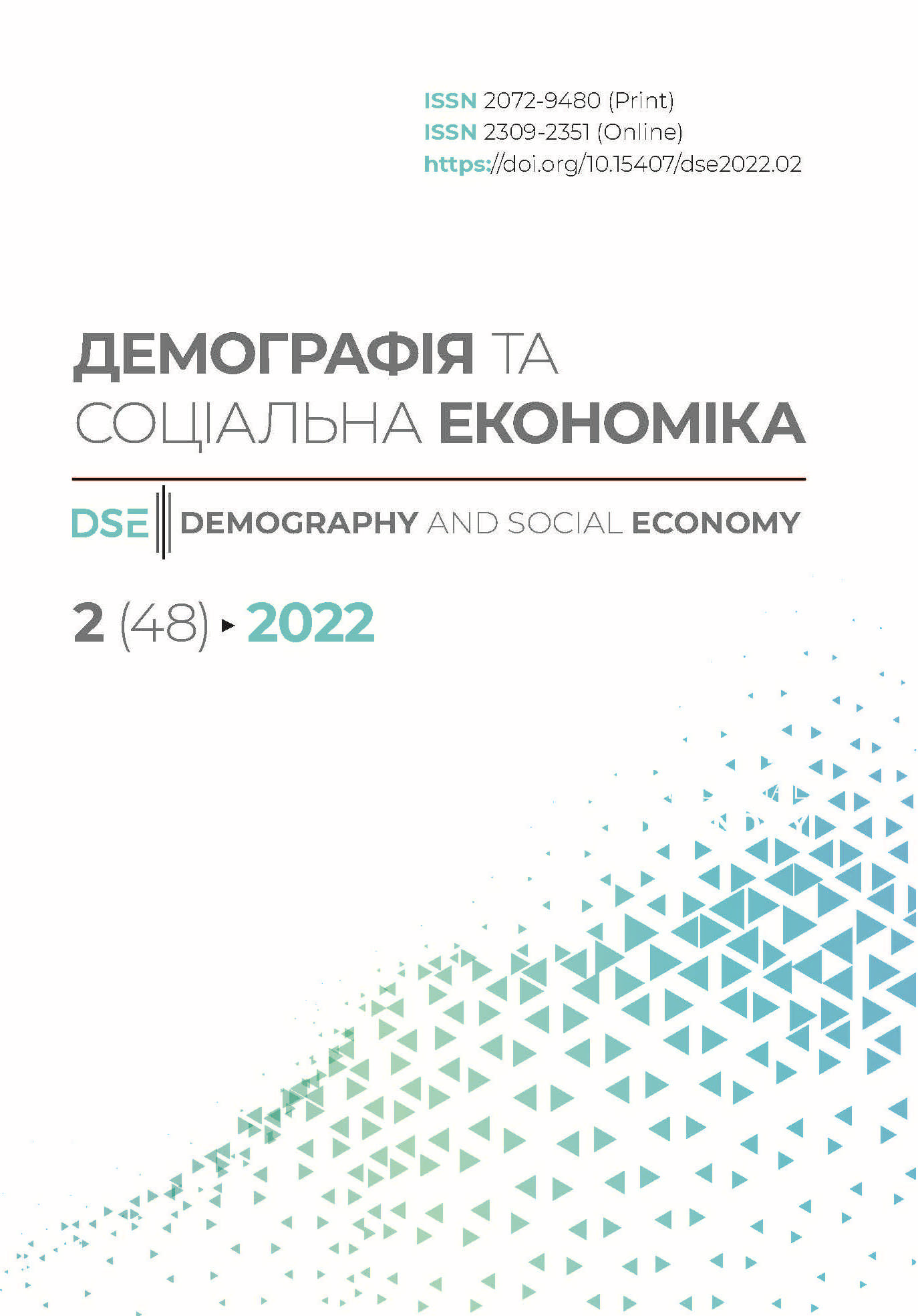ДЕМОГРАФІЧНА ПЛАТФОРМА ФОРМУВАННЯ МОДЕЛЬНОГО БЮДЖЕТУ ОХОРОНИ ЗДОРОВ’Я (РЕФОРМАЦІЙНЕ ЗНАЧЕННЯ ТА АКТУАРНА ОЦІНКА)
DOI:
https://doi.org/10.15407/dse2022.02.018Ключові слова:
модельний бюджет, COVID-19, охорона здоров’я, ймовірність, бюджетна медична послугаАнотація
Практика соціального бюджетування в Україні у сфері охорони здоров’я потребує певного удосконалення. Це визначено низкою чинників, як-от: обмеженістю принципів і спрощеністю механізмів формування бюджетів медичних закладів, неврахуванням демографічних факторів, значення яких зростає в умовах наслідків пандемії COVID-19 та проведенням військових заходів на території України. В статті визначено теоретичні основи організації соціального бюджету охорони здоров’я та інституціональні характеристики його удосконалення. Розглядається процес бюджетування в системі охорони здоров’я країни, включаючи історію реформування охорони здоров’я, і відзначається його невідповідність потребам населення у медичному лікуванні. Ризики у бюджетному процесі охорони здоров’я передусім виникають тому, що не враховуються демографічні фактори захворюваності населення, вплив яких на бюджетування значно зростає в умовах сучасної кризової ситуації України. Отже, актуальною є проблема збалансування місцевих бюджетів та визначення обсягів фінансової допомоги на основі удосконаленого нормативного підходу. Метою роботи є реалізація проблеми фінансової стабілізації системи охорони здоров’я на основі еластичності витрат залежно від демографічних факторів. Новизною — теоретичне обґрунтування та моделювання фінансових процесів із врахуванням статево-вікової структури населення. Поряд із дедуктивним використано ймовірнісний метод дослідження. В якості нових підходів до організації соціального бюджету охорони здоров’я пропонується модель фінансування за статево-віковими ознаками. Розроблена медико-демографічна матриця, завдяки чому можливо здійснювати різні оперативні фінансові розрахунки і визначати вартість лікування населення залежно від структури та динаміки демографічних факторів.
ЛІТЕРАТУРА
- Ганущак Ю. Реформування територіальної організації влади. Ки їв: ТОВ «Софія –А», 2013. 164 с.
- Про затвердження Методики аналізу діяльності судів. Наказ державної судової адміністрації України від 07.06.2018 № 286.
- Опис модельного апарату та основних підходів для прогнозування доходів бюджету. URL: https://mof.gov.ua/storage/files/opys_ma_prognozuvannya_2606.docx (дата звернення: 15.02.2022).
- Створення власної освітньої програми: поради для директорів школи. URL: http://obmetportal.at.ua/index/osvitni_programi/0-592021р (дата звернення: 25.02.2022).
- Leonov S. The «Model» Budget: the Features of Its Formation and Implementation. Bulletin of Baikal State University. 2019. https://doi:10.17150/2500-2759.2019.29(2).314-323 (дата звернення: 17.03.2022).
- Про затвердження Методичних рекомендацій з прогнозування потреби закладів охорони здоров’я України у медичних кадрах на довгострокову перспективу. Наказ Міністерства охорони здоров’я України від 15.08.2011 № 512.
##submission.downloads##
Опубліковано
Як цитувати
Номер
Розділ
Ліцензія
Авторське право (c) 2022 Валерій Новіков

Ця робота ліцензується відповідно до Creative Commons Attribution-NonCommercial-NoDerivatives 4.0 International License.
Дата затвердження 2022-04-25
Дата публікації 2022-07-18


